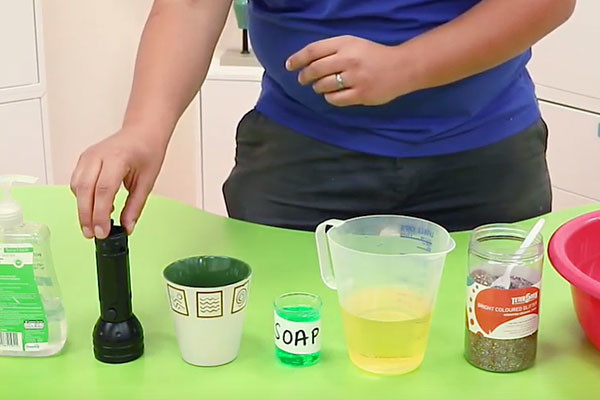
About Scitech
Scitech is a not-for-profit organisation proudly supported by the Western Australian Government through the Department of Energy and Economic Diversification
Discover the scientific secrets behind our most important resource - water!
Why is the ocean surface warm and the deep sea cold? It’s all about density!
Scitech presenter Evan demonstrates how warm water and cold water react to each other and how their density can create some unexpected patterns.
What you’ll need:
Instructions
Place a jar of cool water and a jar of warm water onto one of your plastic trays. Add a few drops of blue food colouring to the cold water, and drops of red to the warm water.
Notice how the red colouring spreads more quickly in the warm water – this effect is called a “convection current”, where the heat in this liquid causes it to mix around more rapidly.
Give each jar a stir to finish mixing the colours through. Place the plastic clipboard on top of the jar of warm water, and hold tight to flip the jar over.
With the board still in place underneath the second jar, place it on top of the first jar and ensure the openings of both jars are aligned. Carefully remove the clipboard from between the jars.
Notice how the warm red water sits on top of the cold blue water – while the colours may mix a little, the two colours should stay the same for a while.
Let’s see what happens when we swap the jars around. Repeat step 1 with your remaining jars of water and tray.
This time, flip the jar of cold water on top of the warm water. Notice how the dense, cold water mixes completely with the hot water in just a few seconds!
Looking for more activities to do at home?
Upon clicking the "Book Now" or "Buy Gift Card" buttons a new window will open prompting contact information and payment details.